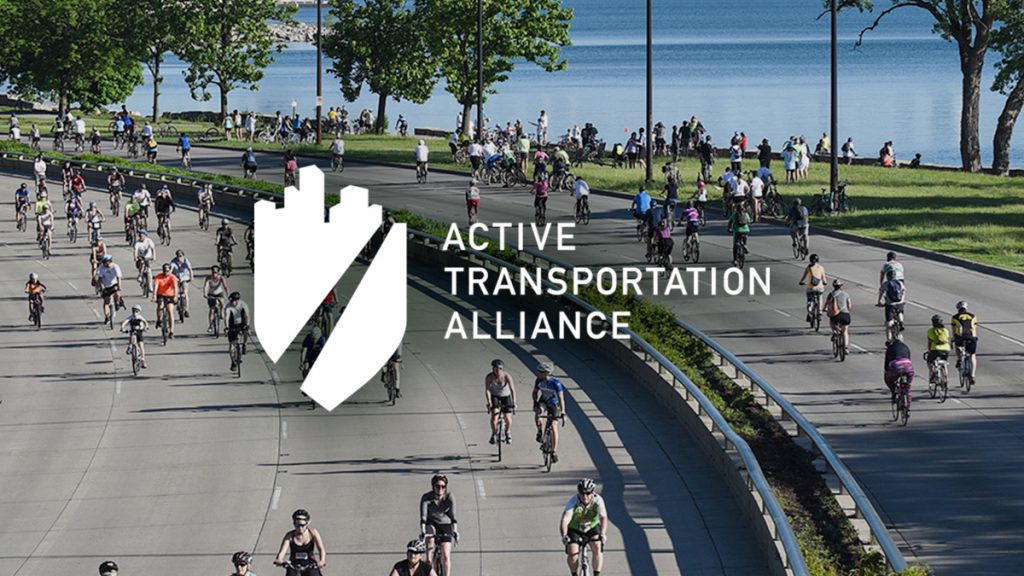On Wednesday July 2, 45th Ward Ald. John Arena and the Chicago Department of Transportation (CDOT) will host an open house to discuss alternative visions for a Complete Streets project on Milwaukee Ave. between Lawrence and Elston.
At an initial public meeting in January, the alderman and city said they were seeking to make improvements for people driving, walking, using transit and riding bikes.
With over 900 reported crashes between 2008 and 2012, including a single car crash that claimed two lives just days after the initial meeting, the project is first and foremost about making the street safer for everyone and avoiding preventable injuries and fatalities.
Of the serious injuries that resulted from these crashes, 40 percent were among people walking or riding bikes — the most vulnerable users of the road.
Numbers like these are simply unacceptable.
So what can be done?
Some of the possible elements to mitigate the problems and enhance the street for everyone include: improved crosswalks and pedestrian refuges, consolidated travel lanes to reduce speeding and weaving, improved bus service and shelters and new protected bike lanes.
All of these could be accomplished while still maintaining sufficient capacity to move the same amount of traffic Milwaukee Ave. sees on the average day.
Seems like an easy call, doesn’t it? We have the technology, we can rebuild it. Just fix the road.
But not everyone is thrilled by the prospect of narrowing the street and adding more accommodations for people walking, riding bikes and taking public transit.
One local group has been vocally opposed to some of the proposed elements of the Milwaukee Ave. Complete Street Project, particularly consolidating travel lanes and adding curb-side protected bike lanes.
The group claims it has gathered over 5,000 signatures on a petition by telling folks the project will cause congestion, create a negative climate for local businesses and block the road for emergency vehicles.
However, thousands of projects that involve narrowing or consolidating lanes have been installed throughout the country, including many right here in Chicago, all without leading to the nightmare scenarios envisioned by opponents of this project (see CDOT photo to right of before/after recent project on Wabash in the South Loop.)
So let's set aside hypothetical negatives and focus on the facts.
AARP (yes, that AARP) developed a great factsheet recently that dispels many of the most commonly believed myths about "rightsizing" roads. (AARP and others often use the term "road diet" to describe these types of projects, but no one likes going on a diet, so we prefer using other ways of describing these projects.)
Let’s take a look at a few of the big myths AARP includes in its list:
- Narrowing the street will cause congestion and divert traffic. According to the Federal Highway Administration, properly designed lane consolidations don’t divert traffic. In fact, there are many examples of traffic increasing after construction. By maintaining a center turn lane, space remains for turning or other stopped vehicles to get out of the way of through traffic, thus avoiding back-ups.
- Local business will suffer if we consolidate lanes. By reducing traffic speeds, businesses are more likely to be seen. By encouraging more walking and biking, these projects also attract customers that tend to spend more per month than drivers.
- Emergency vehicles will be impeded if there is only one lane in each direction. A good design can ensure emergency vehicles and first responders are able to quickly respond to any incident. Center turn lanes provide space for ambulances, fire trucks or police to safely pass any traffic that may be on the street.
Besides not creating problems, consolidating and narrowing lanes can solve quite a few. By reducing traffic speeds and dangerous behavior like weaving, fewer lanes can boost safety while maintaining a more consistent and smooth traffic flow.
Chicago sees a lot of "hurry up and wait" driving, where people put the pedal to the metal at a green light, only to arrive at the next red light to wait longer.
By slowing down between lights, the same average speed can be maintained while reducing the hazard speeding brings to everyone on the street.
As a bonus, the additional space created by consolidating lanes can be re-purposed for things like protected or buffered bike lanes. Everybody wins!
Be sure to join us and other supporters of safer and better streets at the July 2 Milwaukee Ave. Complete Street Project open house. You can download and read the AARP factsheet on road diets here.

